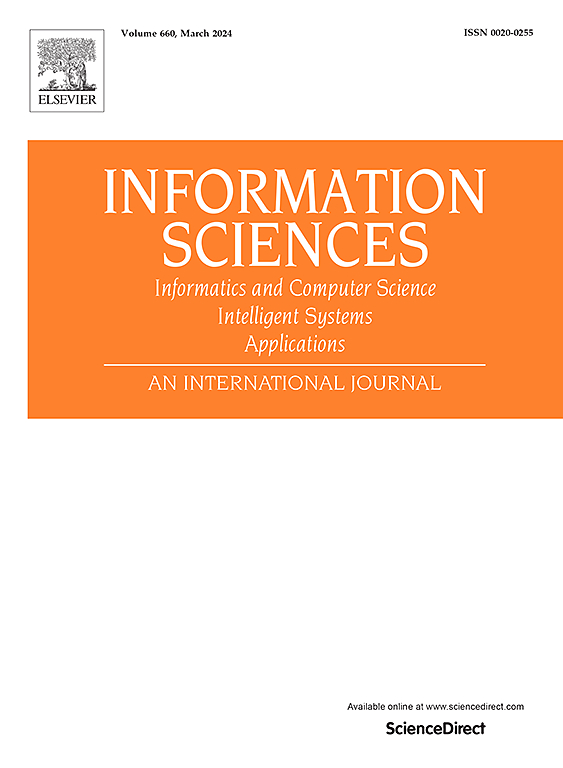ERMNF:一种基于边缘相关性的多路网络融合新方法
IF 6.8
1区 计算机科学
0 COMPUTER SCIENCE, INFORMATION SYSTEMS
引用次数: 0
摘要
近年来,多路网络已被广泛用于表示现实世界中的复杂系统。虽然它们为复杂系统提供了有价值的见解,但它们的多层结构对网络分析任务提出了重大挑战。网络融合过程已成为解决这一问题的有力工具;然而,现有的方法大多不适合大规模复用网络,且忽略了层间结构。为了解决这一问题,我们提出了一种基于边缘相关性的多路网络融合(ERMNF)模型,该模型将多路网络转换为单路网络,同时保留其基本结构特性。铁路营运基金分三个主要阶段运作。首先,它将来自所有层的链路收集到一个单层网络中。接下来,ERMNF基于最短路径的概念,使用两种不同的边缘关联模型确定二进制聚合网络中每个链路的相关性。最后,它使用边缘缩减(ER)模型删除不相关的链接,同时保持节点集。我们在八个真实的多路复用网络上评估了ERMNF,并将其与五种已知的融合方法进行了比较。我们的实验是双重的。首先,我们评估了融合网络保留原始网络拓扑特性的能力。其次,我们评估了它在各种网络分析任务上的性能,包括影响最大化、链接预测和社区检测。本文章由计算机程序翻译,如有差异,请以英文原文为准。
ERMNF: A novel multiplex network fusion method based on edge relevance
Recently, multiplex networks have been widely used to represent real-world complex systems. While they offer valuable insights into complex systems, their multi-layer structure poses significant challenges for network analysis tasks. Network fusion process has emerged as a powerful tool for addressing this issue; however, most existing methods are inappropriate for large-scale multiplex networks and ignore the inter-layer structure. To address this problem, we propose an edge relevance-based multiplex network fusion (ERMNF) model, which transforms the multiplex network into a monoplex network while preserving its essential structural properties. ERMNF operates in three main phases. First, it collects the links from all layers into a single-layer network. Next, ERMNF determines the relevance of each link in the binary aggregated network using two different edge relevance models based on the concept of shortest paths. Finally, it removes irrelevant links using an edge reduction (ER) model, while maintaining the set of nodes. We evaluated ERMNF on eight real-world multiplex networks, comparing it with five well-known fusion methods. Our experiments were two-fold. First, we assessed the fused network’s ability to preserve the original network’s topological properties. Second, we evaluated its performance on various network analysis tasks, including influence maximization, link prediction, and community detection.
求助全文
通过发布文献求助,成功后即可免费获取论文全文。
去求助
来源期刊

Information Sciences
工程技术-计算机:信息系统
CiteScore
14.00
自引率
17.30%
发文量
1322
审稿时长
10.4 months
期刊介绍:
Informatics and Computer Science Intelligent Systems Applications is an esteemed international journal that focuses on publishing original and creative research findings in the field of information sciences. We also feature a limited number of timely tutorial and surveying contributions.
Our journal aims to cater to a diverse audience, including researchers, developers, managers, strategic planners, graduate students, and anyone interested in staying up-to-date with cutting-edge research in information science, knowledge engineering, and intelligent systems. While readers are expected to share a common interest in information science, they come from varying backgrounds such as engineering, mathematics, statistics, physics, computer science, cell biology, molecular biology, management science, cognitive science, neurobiology, behavioral sciences, and biochemistry.
 求助内容:
求助内容: 应助结果提醒方式:
应助结果提醒方式:


